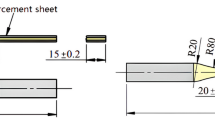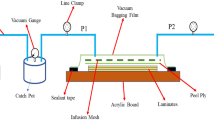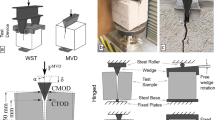Abstract
Low temperature cracking is one of the main distresses of asphalt pavement in cold regions. Stress relaxation characteristics is critical for cracking resistance of asphalt materials, especially at low temperatures, but there are few studies on the relaxation characteristic of asphalt mastics. To evaluate the effects of relaxation characteristics of asphalt binders and mastics on its low temperature performance, beam bending relaxation test was carried out through dynamic thermomechanical analyzer at low temperatures. Relaxation rate and relaxation time were proposed to illustrate the relaxation characteristics of asphalt binders and mastics. Then, the low-temperature performance of asphalt binders and mastics was evaluated by bending beam rheometer (BBR), glass transition temperature (Tg), and single edge notch beam bending test. Finally, the correlation of relaxation characteristics with low-temperature properties was analyzed based on Pearson’s correlation coefficient and Spearman rank correlation coefficient. The results show that the elasticity of asphalt mastics increases with incorporation of mineral fillers and thus the viscous deformation potential is reduced, which affects the stress relaxation capability. The low-temperature cracking performance of asphalt mastics is indeed compromised as compared with asphalt binders, and the asphalt mastics prepared with fly ash performs the worst since it presents a stronger hardening effect. Fracture energy is determined not to be suitable for evaluating the low-temperature performance of asphalt mastics since its results contradict the BBR and Tg tests. The maximum displacement at fracture can better characterize the brittleness of asphalt materials at low temperatures. The relaxation characteristic index has the strongest correlation with Tg of asphalt binders and mastics, followed by maximum displacement at fracture and comprehensive compliance parameter (Jc). The correlation coefficients are almost larger than 0.5, suggesting that relaxation time and relaxation rate can characterize the low-temperature properties of asphalt binders and mastics.











Similar content being viewed by others
References
Chen JQ, Dan HC, Ding YJ et al (2021) New innovations in pavement materials and engineering: a review on pavement engineering research 2021. J Traffic Transp Eng (Engl Ed) 8(6):815–999. https://doi.org/10.1016/j.jtte.2021.10.001
Tan YQ, Sun ZY, Gong XB, Xu HN, Zhang L, Bi YF (2017) Design parameter of low-temperature performance for asphalt mixtures in cold regions. Constr Build Mater 155(30):1179–1187. https://doi.org/10.1016/j.conbuildmat.2017.09.094
Canestrari F, Stimilli A, Bahia HU, Virgili A (2015) Pseudo-variables method to calculate HMA relaxation modulus through low-temperature induced stress and strain. Mater Des 76:141–149. https://doi.org/10.1016/j.matdes.2015.03.063
Wang T, Xiao FP, Amirkhanian S, Huang WD, Zheng ML (2017) A review on low temperature performances of rubberized asphalt materials. Constr Build Mater 145:483–505. https://doi.org/10.1016/j.conbuildmat.2017.04.031
Du ZY, Jiang CS, Yuan J, Xiao FP, Wang JG (2020) Low temperature performance characteristics of polyethylene modified asphalts—a review. Constr Build Mater 264:1–18. https://doi.org/10.1016/j.conbuildmat.2020.120704
Sun DQ, Yuan WM (2007) Evaluation of low temperature performance of polymer modified asphalts by force-ductility test. J Build Mater 10(1):37–42 ((In Chinese))
AASHTO T313 (2012) Standard method of test for determining the flexural creep stiffness of asphalt binder using the bending beam rheometer (BBR). American Association of State Highway and Transportation Officials, United States
Ding HB, Qiu YJ, Rahman A (2019) Low-temperature reversible aging properties of selected asphalt binders based on thermal analysis. J Mater Civ Eng 31(3):1–9. https://doi.org/10.1061/(ASCE)MT.1943-5533.0002625
Huang WD, Fu XK, Yan YW, Liu SP (2017) Evaluation of low temperature performance and correlation analysis on low temperature indexes of SBS modified asphalts. J Build Mater 20(3):456–463 ((In Chinese))
Zheng WH, Wang HN, You ZP, Shao LL, Golroo A, Chen Y (2021) Mechanism and rheological characterization of MDI modified Wood-based bio-oil asphalt. Constr Build Mater 309:1–11. https://doi.org/10.1016/j.conbuildmat.2021.125113
Wang D, Falchetto AC, Riccardi C, Westerhoff J, Wistuba MP (2021) Investigation on the effect of physical hardening and aging temperature on low-temperature rheological properties of asphalt binder. Road Mater Pavement Des 22(5):1117–1139. https://doi.org/10.1080/14680629.2019.1665089
Wang D, Falchetto AC, Riccardi C, Wistuba MP (2020) Investigation on the low temperature properties of asphalt binder: glass transition temperature and modulus shift factor. Constr Build Mater 245:118351. https://doi.org/10.1016/j.conbuildmat.2020.118351
Yan KZ, Wang DC (2020) Low temperature performance index of polymer modified asphalt. J Build Mater 23(2):479–484 ((In Chinese))
Kim SS, Wysong ZD, Kovach J (2006) Low-temperature thermal cracking of asphalt binder by asphalt binder cracking device. Bituminous Mater Nonbituminous Comp Bituminous Paving Mix. https://doi.org/10.3141/1962-04
Tan YQ, Fu YK, Ji L, Zhang L (2016) Low-temperature evaluation index of rubber asphalt. J Harbin Institute Technol 48(3):66–70 ((In Chinese))
Huang Q, Liu A, Yan EH (2022) Multi-index evaluation and study of low temperature performance of high modulus modified asphalt. J Highway 3:42–48 ((In Chinese))
Liu ST, Cao WD, Shang SJ, Qi H, Fang JG (2010) Analysis and application of relationships between low-temperature rheological performance parameters of asphalt binders. Constr Build Mater 24(4):471–478. https://doi.org/10.1016/j.conbuildmat.2009.10.015
Teymourpour P, Bahia HU (2015) Development of failure master curve for asphalt mastics characterization. In: 8th RILEM international symposium on testing and characterization of sustainable and innovative bituminous materials, Ancona, Italy, pp 3–14. https://doi.org/10.1007/978-94-017-7342-3_1
Pasandín AR, Pérez I (2015) The influence of the mineral filler on the adhesion between aggregates and bitumen. Int J Adhes Adhes 58:53–58. https://doi.org/10.1016/j.ijadhadh.2015.01.005
Chen Y, Xu SB, Tebaldi G, Romeo E (2022) Role of mineral filler in asphalt mixture. Road Mater Pavement Des 23(2):247–286. https://doi.org/10.1080/14680629.2020.1826351
Li F, Yang Y, Wang LB (2021) The interfacial interaction between asphalt binder and mineral filler: a comprehensive review on mechanisms, evaluation methods and influence factors. Int J Pavement Eng 8:1–15. https://doi.org/10.1080/10298436.2021.1942468
Buchner J, Wistuba MP (2020) Relating asphalt mixture performance to asphalt mastic rheology. In: Proceedings of the 9th international conference on maintenance and rehabilitation of pavements-Mairepav9. Lecture notes in civil engineering (LNCE 76), pp 639–649. https://doi.org/10.1007/978-3-030-48679-2_60
Tabatabaee HA, Bahia HU (2014) Establishing use of asphalt binder cracking tests for prevention of pavement cracking. Road Mater Pavement Des 15:279–299. https://doi.org/10.1080/14680629.2014.927949
Delaporte B, Benedetto HD, Chaverot P, Gauthier G (2007) Linear viscoelastic properties of bituminous materials: from binders to mastics. Asphalt Paving Technol 76:455–494
Teymourpour P (2015) Using mastic characterization to predict asphalt mixture low-temperature cracking behavior. University of Wisconsin, p 182
Raab C, Arraigada M, Ibrahimi H (2021) Correlation of cracking behaviour at binder, mastic and asphalt concrete levels. Road Mater Pavement Des. https://doi.org/10.1080/14680629.2021.2009901
Li QS, Qiu YJ, Rahman A, Ding HB (2018) Application of steel slag powder to enhance the low-temperature fracture properties of asphalt mastic and its corresponding mechanism. J Clean Prod 184:21–31. https://doi.org/10.1016/j.jclepro.2018.02.245
Sobolev K, Vivian IF, Saha R, Wasiuddin NM, Saltibus NE (2014) The effect of fly ash on the rheological properties of bituminous materials. Fuel 116:471–477. https://doi.org/10.1016/j.fuel.2013.07.123
Woszuk A, Bandura L, Franus W (2019) Fly ash as low cost and environmentally friendly filler and its effect on the properties of mix asphalt. J Clean Prod 235:493–502. https://doi.org/10.1016/j.jclepro.2019.06.353
Zhao Z, Wu SP, Liu QT, Xie J, Yang C et al (2021) Characteristics of calcareous sand filler and its influence on physical and rheological properties of asphalt mastic. Constr Build Mater 301:1–10. https://doi.org/10.1016/j.conbuildmat.2021.124112
Modarres A, Rahmanzadeh M (2014) Application of coal waste powder as filler in hot mix asphalt. Constr Build Mater 66:476–483. https://doi.org/10.1016/j.conbuildmat.2014.06.002
Modarres A, Rahmanzadeh M, Ayar P (2015) Effect of coal waste powder in hot mix asphalt compared to conventional fillers: mix mechanical properties and environmental impacts. J Clean Prod 91:262–268. https://doi.org/10.1016/j.jclepro.2014.11.078
Wu SP, Zhu JQ, Zhong JJ, Wang DM (2011) Experimental investigation on related properties of asphalt mastic containing recycled red brick powder. Constr Build Mater 25(6):2883–2887. https://doi.org/10.1016/j.conbuildmat.2010.12.040
Moon KH, Falchetto AC, Park JY, Jeong JH (2014) Development of high performance asphalt mastic using fine taconite filler. KSCE J Civ Eng 18(6):1679–1687. https://doi.org/10.1007/s12205-014-1207-6
Farahi B, Cloutier C, Sobolev K, Faheem A et al (2021) Effect of using cement reactive powders on rheological performance of asphalt mastics. international airfield and highway pavements conference of the transportation and development institute (T and DI) of the American Society of Civil Engineers (ASCE), Electr Network, pp 115–125
Romeo E, Ghizzardi V, Rastelli S, Montepara A (2015) Influence of mineral fillers and their fractional voids on mastic rheological and mechanical properties. In: 8th RILEM international symposium on testing and characterization of sustainable and innovative bituminous materials, Ancona, Italy, pp 681–692
Liu J, Yan KZ, Liu J (2018) Rheological characteristics of polyphosphoric acid-modified asphalt mastic. J Mater Civ Eng 30(12):1–7. https://doi.org/10.1061/(ASCE)MT.1943-5533.0002555
Cao K, Xu WY, Chen D, Feng HM (2018) High- and low-temperature properties and thermal stability of silica fume/SBS composite-modified asphalt mortar. Adv Mater Sci Eng 2018:1–8. https://doi.org/10.1155/2019/9897813
Li C, Chen ZW, Wu SP, Li B et al (2017) Effects of steel slag fillers on the rheological properties of asphalt mastic. Constr Build Mater 145:383–391. https://doi.org/10.1016/j.conbuildmat.2017.04.034
Tao GY, Xiao Y, Yang LF, Cui PD et al (2019) Characteristics of steel slag filler and its influence on rheological properties of asphalt mortar. Constr Build Mater 201:439–446. https://doi.org/10.1016/j.conbuildmat.2018.12.174
Wang WS, Cheng YC, Tan GJ et al (2018) Laboratory investigation on high- and low-temperature performances of asphalt mastics modified by waste oil shale ash. J Mater Cycles Waste Manag 20(3):1710–1723. https://doi.org/10.1007/s10163-018-0737-2
Zheng CF, Li RM, Hu MJ, Zou LL (2019) Determination of low-temperature crack control parameter of binding asphalt materials based on gray correlation analysis. Constr Build Mater 217:226–233. https://doi.org/10.1016/j.conbuildmat.2019.05.065
Tan YQ, Li ZH, Zhang XY, Dong ZJ (2010) Research on high- and low-temperature properties of asphalt-mineral filler mastic. J Mater Civil Eng 22(8):811–819. https://doi.org/10.1061/(ASCE)MT.1943-5533.0000015
Chen HS, Li MM, Kang YG, Zhang SL (2008) Mittag–Leffler function and its application to viscoelastic stress relaxation. Chem J Chin U 29(6):1271–1275 ((In Chinese))
Velasquez RA (2009) On the representative volume element of asphalt concrete with applications to low temperature. PhD thesis, University of Minnesota, United States
Moon KH, Cannone Falchetto A, Park JY, Jeong JH (2014) Development of high performance asphalt mastic using fine taconite filler. KSCE J Civil Eng 18(6):1679–1687. https://doi.org/10.1007/s12205-014-1207-6
ASTM E399-90 (2002) Standard test method for plane-strain fracture toughness of metallic materials. American Society of Testing Materials, New York
Bueno M, Hugener M, Partl MN (2015) Fracture toughness evaluation of bituminous binders at low temperatures. Mater Struct 48(9):3049–3058. https://doi.org/10.1617/s11527-014-0378-4
Lin XL (2013) Unified evaluation index for high-and-low temperature properties of asphalt based on rheological theory. PhD thesis, Harbin Institute of Technology, China
Chen Y, Zheng WH, Xu SB, Tebaldi G, Su YM (2022) Characteristics of mineral fillers and their effects on mastic fracture resistance at intermediate temperature 20 °C. Constr Build Mater 323:1–7. https://doi.org/10.1016/j.conbuildmat.2022.126568
Acknowledgements
The authors gratefully acknowledge the financial supports by the National Science Foundation of China (52078047).
Author information
Authors and Affiliations
Contributions
WW: Original draft preparation and writing, Experiment and data analysis. YY: Experiment and data analysis. YC: Original draft preparation, Visualization, Project administration. NH: Validation, Writing—Reviewing and Editing. GT: Validation, Writing—Reviewing and Editing.
Corresponding author
Ethics declarations
Conflict of interest
The authors declare no conflict of interest in this study.
Additional information
Publisher's Note
Springer Nature remains neutral with regard to jurisdictional claims in published maps and institutional affiliations.
Rights and permissions
Springer Nature or its licensor holds exclusive rights to this article under a publishing agreement with the author(s) or other rightsholder(s); author self-archiving of the accepted manuscript version of this article is solely governed by the terms of such publishing agreement and applicable law.
About this article
Cite this article
Zheng, W., Yang, Y., Chen, Y. et al. Low temperature performance evaluation of asphalt binders and mastics based on relaxation characteristics. Mater Struct 55, 204 (2022). https://doi.org/10.1617/s11527-022-02039-y
Received:
Accepted:
Published:
DOI: https://doi.org/10.1617/s11527-022-02039-y




